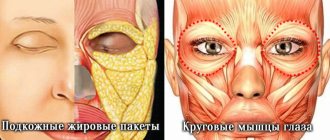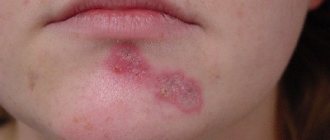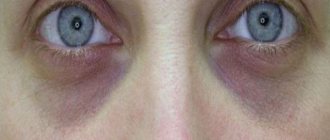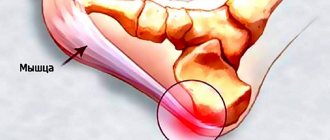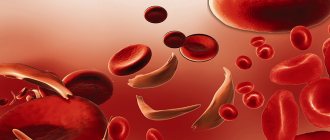Uveitis – this is not just one disease, but a whole complex of them. This pathology means an inflamed uveal tract - the so-called choroid of the eyes.
What kind of disease is this?
Among eye lesions with an inflammatory course, uveitis is diagnosed in almost half of the cases.
Uveitis: photo
Anatomically, the uveal tract is considered the middle layer of the eye and is located under the sclera. Its structure is formed by the iris, ciliary (ciliary) body and choroid (choroid):
Uveal tract of the eye
ICD-10 code
The international classification classifies uveitis as diseases of the eye and its adnexa (classes H00-H59), diseases of the sclera, cornea, and iris of the ciliary body (classes H15-H22).
Uveitis belongs to class H20.0 , which stands for acute and subacute iridocyclitis. In addition to uveitis, this group includes cyclitis and iritis.
Causes
There are many possible factors for the development of uveitis:
- infection;
- impaired metabolism;
- burn;
- hypothermia;
- reduced immunity;
- autoimmune pathology;
- penetrating trauma;
- psoriasis;
- virus (hepatitis, cytomegalovirus, etc.);
- chronic diseases (for example, diabetes);
- consequences of surgery;
- systemic inflammatory process.
Uveitis in children most often occurs:
- after injury;
- for infections;
- against the background of impaired metabolism or weak immunity;
- with acute allergies.
Video:
Classification
Uveitis is classified according to several criteria:
Localization
To distinguish uveitis by location, they are divided into anterior, median, posterior and generalized.
- Anterior uveitis, meaning pathology in the anterior parts of the uveal tract, respectively, includes iritis, anterior cyclitis and iridocyclitis. It is in this vein that the disease manifests itself more often. Inflammation affects the iris and ciliary body.
- Median inflammation is also known as intermediate inflammation. Posterior cyclitis, parsplanitis and peripheral uveitis are attributed to it. In this clinical picture, not only the choroid is affected, but also the retina with the vitreous and ciliary body.
- Posterior uveitis affects the retina, optic nerve and choroid. This type of inflammation may mean choroiditis, chorioretinitis, retinitis or neurouveitis.
- generalized occurs , that is, panuveitis.
Nature of inflammation
According to the nature of the inflammatory process, it can be of the serous, fibrinous-lamellar, purulent, hemorrhagic or mixed type.
Causes
The causes of uveitis are exogenous and endogenous .
- An exogenous disease means that its causes are external. Usually this is an injury, a burn, or an unsuccessful operation.
- Endogenous causes of inflammation mean that it was caused by internal factors, such as infection.
Depending on the causes of occurrence, uveitis can be primary or secondary . Primary inflammation occurs independently, and secondary inflammation occurs against the background of another ophthalmological disease (as a complication).
Features of the course
According to the time course, uveitis is acute, chronic and recurrent.
- Acute lasts no more than three months.
- A longer duration of inflammation means chronic uveitis.
- recurrent when it occurs again after complete recovery.
What is uveitis?
The uveal tract is physiologically a collection of the following parts: ciliary (ciliary) body, choroid, iris, choroid, located under the retina. The disease occurs frequently in 30-57% of cases.
Often the pathology leads to low vision and blindness (in 10% of cases). The blood supply to the vascular zone of the eyes comes from various sources, which is why inflammation can occur in isolation, affecting only individual structures.
The disease develops regardless of the gender and age of the patient. But it is noted that the average age of prevalence of uveitis is 40 years.
Reasons for development
The etiology of uveitis is different; there are even ophthalmologists who study and treat only this pathological condition. Often the disease is promoted by slow blood flow in the vessels. Due to this feature, various pathogenic agents are retained in the choroid, which provokes the formation of infectious inflammation.
Bacteria are not always the cause of uveitis, although they are the main provocateurs.
There are many options for developing the problem:
- often the causative agents are sexually transmitted microorganisms, such as syphilitic spirochete or gonococcus;
- less commonly, uveitis is caused by viruses (in particular herpes) or Candida fungi;
- the development of uveitis is possible due to the proliferation of parasitic eggs (helminths);
- Opisthorchiasis poses a great danger; as a rule, infection by flukes occurs in people who consume river fish in a raw or semi-raw state.
There are various infectious agents present in the eyes of every person, but normally they do not cause harm. The body is able to adapt to them, but at the slightest weakening of the immune defense, the problem immediately begins to develop.
Accordingly, there are two main reasons for the development of the disease, these are:
- damage to eye structures by pathogens;
- suppression of local immune defense in combination with slow blood flow.
Despite the fact that uveitis is an inflammatory process, there is another option for the development of the problem that is not related to an infectious nature. This is an autoimmune lesion. Appears as a result of an unexpected failure of immune function.
It is not uncommon for uveitis to be a secondary problem. Appears against the background of rheumatoid arthritis, systemic disorders of autoimmune function or psoriasis. In such cases, due to the high risk of relapse, patients require long-term complex therapy in compliance with all doctor’s instructions regarding lifestyle.
Pathogenesis
Normally, the choroid contains practically no cells of the leukocyte system. With the development of the inflammatory process caused by various factors, a large number of T and B lymphocytes, fibroblasts and mast cells migrate to the lesion, which secrete inflammatory mediators. Elements of the immune system can penetrate other (adjacent) membranes (for example, aqueous humor) and cause their damage. With the development of an infectious-inflammatory process, hyperemia and swelling of the medial membrane of the eyeball occurs with the appearance of various disorders of the visual apparatus.
Rheumatoid uveitis
Risk factors
The provoking factors of uveitis are:
- infections;
- violation of metabolic processes;
- burns;
- weak immune defense;
- hypothermia;
- autoimmune disorders;
- psoriasis;
- penetrating trauma;
- viral infection (cytamegalovirus, hepatitis);
- consequences of operations;
- systemic inflammatory lesion;
- chronic pathologies (in particular diabetes).
In children, the problem arises under the following circumstances:
- injuries;
- infections;
- failures of metabolic processes;
- suppression of local defense;
- acute allergies;
- psychological stress.
Prevention of uveitis
Uveitis, the symptoms and treatments for which are described above, can be prevented. In order to reduce the likelihood of developing the disease to a minimum, the following recommendations must be followed:
- observe the work and rest schedule, do not overstrain your eyes;
- When working at a computer, take periodic breaks and give your eyes a rest;
- avoid hypothermia;
- increase the body’s immune defense, engage in hardening;
- observe the rules of hygiene;
- do not injure the eye;
- avoid the development of allergic reactions;
- promptly sanitize foci of chronic infection in the body and treat eye diseases;
- periodically undergo preventive examinations with an ophthalmologist for early diagnosis of possible eye diseases, which significantly facilitates subsequent treatment and significantly improves the prognosis.
Health to you!
Classification of inflammatory processes of the eyes
The classification of uveitis occurs according to several criteria; it was developed by N.S. Zaitseva.
Pathology is determined by:
- etiological sign;
- localization of the outbreak;
- the nature of the course;
- inflammatory activity.
By etiology
Classification of uveitis according to etiological characteristics.
| Form of uveitis | Description of the problem |
| Infectious uveitis | The basis of development lies in damage to the membrane by viruses, fungi, bacteria, and parasites. |
| Uveitis of systemic or syndromic etiology | The problem develops in the presence of the following pathologies: Reiter's syndrome, Sjogren's syndrome, Vogt-Koyanagi syndrome, rheumatism, psoriasis, multiple sclerosis, sarcidosis. |
| Non-contagious form of uveitis | Appears due to the harmful effects of allergens. It is divided into two types: hereditary and acquired. |
| Post-traumatic form | Appears as a result of a penetrating wound, contusion, the results of surgery, cataract extraction. |
| Uveitis caused by immune disorders | Disorder of local immunity, disorders of the neuro-endocrine system (during menopause), allergic-toxic damage (neoplastic tumors, retinal detachment), the appearance of clots in the bloodstream. |
By localization
Based on localization, uveitis is divided into four types.
| Type | Description |
| Anterior uveitis | The anterior region of the shell is affected. As a rule, the lesion extends to the iris and ciliary body. Manifests itself as iritis, cyclitis, iridocyclitis. |
| Median uveitis | This is an intermediate defeat. This includes posterior cyclitis, peripheral uveitis, and parsplanitis. The source of inflammation affects the membrane, ciliary body and retina. |
| Posterior uveitis | The uveal tract, retina, and optic nerve are susceptible to inflammation. Manifests as choroiditis, retinitis, chorioretinitis. |
| Generalized uveitis | The lesion affects all structures. Manifests itself in the form of panuveitis. |
According to inflammation activity
Depending on the complexity of the process, uveitis has a different nature of damage:
- fibrinous lamellar;
- hemorrhagic;
- purulent;
- serous;
- mixed.
Along the course of uveitis
Uveitis occurs in three forms:
- Spicy. Caused by an abrupt onset, a pronounced picture. Signs of a problem with adequate treatment are observed within 3 months.
- Chronic. Long-term course with mild symptoms.
- Recurrent. After complete recovery, a new wave of the disease appears (relapse). With frequent relapses, uveitis becomes chronic.
Traditional medicine methods
A decoction of plants such as chamomile, rose hips, calendula or sage can contribute to a noticeable improvement in eye condition. Pour a glass of boiling water over 3 tablespoons of chopped rose hips/herbs, leave for 5 hours, strain.
Rinse your eyes with the resulting infusion, each time using new means to introduce liquid to prevent the spread of infection. And - of course - before using traditional methods, you should consult with your doctor.
Symptoms
Clinical manifestations of uveitis depend on the course and form of the pathology.
Symptoms by type of course:
| Acute form | Chronic form |
| When the process is chronic, a sluggish course is noted. Symptoms are vague or absent altogether. Sometimes a slight reddening of the membrane appears. |
Manifestations of uveitis by localization:
| Anterior uveitis | Peripheral uveitis | Posterior uveitis |
Threatens to add a secondary problem:
| In frequent cases, inflammation spreads to the second eye, manifesting itself:
| Accompanied by:
|
When the posterior structures are damaged, specific signs appear:
- the number of floating cloudy spots increases (they are translucent and spiral-shaped);
- the appearance of scotomas (dark circles without outlines, covering part of the visible picture);
- the occurrence of photopsia (light flashes in the form of lines, dots, simple geometric shapes).
These symptoms may indicate retinal detachment, so it is important to monitor any sensations that occur.
Complications
Anterior uveitis may be accompanied by complications such as the occurrence of posterior synechiae. Moreover, these adhesions can be not only single or multiple, but also circular and even accompanied by overgrowth of the pupil. In addition, this type of uveitis is characterized by a serious imbalance in the hydrodynamics of the eye. As a rule, there is a steady increase in intraocular pressure, which – as a result – leads to the development of secondary glaucoma. Occasionally, ophthalmotonus may be reduced, which also results in adverse consequences.{banner_gorizontalnyy3}
Such types of posterior uveitis as chorioretinitis and choroiditis are characterized by clouding of the optical medium and focal atrophy of the fundus. The peripheral location of such lesions leads to a decrease in dark adaptation and a concentric narrowing of the visual field. If the manifestations of atrophy are concentrated in the center of the retina, the patient’s visual acuity noticeably decreases.
Diagnostics
Uveitis, treatment at home is possible only after extensive comprehensive diagnostics, requires immediate initiation of therapy when the first signs appear. When a secondary infection occurs, the help of highly specialized specialists is required.
Complaints and anamnesis
First of all, in ophthalmology, an external examination of the eyes is carried out for conjunctivitis and the condition of the skin of the eyelids. An anamnesis is collected, chronic pathologies affecting the development of uveitis are identified, the patient’s complaints are listened to, and symptoms are determined. After the initial examination, the patient is referred for further examination.
Physical examination
Physical examination methods include:
- visometry (non-invasive examination that evaluates visual acuity);
- perimetry (determining the field of view with a fixed gaze);
- assessment of pupil reaction to a light source and convergence.
Uveitis of various forms occurs with hyper- or hypotension, so it is important to monitor intraocular pressure.
Instrumental diagnostics
Methods of instrumental diagnostics for uveitis.
| Method | Description |
| Biomicroscopy | Areas of band-like dystrophy, cellular reaction, and precipitates are determined. Posterior synechia and posterior capsular cataract are examined. |
| Ophthalmoscopy | Foci of damage to the fundus, inflammation or retinal detachment are detected. |
| Rheoophthalmography | The speed of blood flow in the tissues of the eyes is assessed. |
| Gonioscopy | An assessment is made of the released fluid (exudate), anterior synechia, the anterior chamber angle of the eye, and neovascularization of the iris. |
| Tomography | Allows you to determine the localization of the lesion and accurately determine its nature. |
| Electroretinography | The functional state of the retina and its reaction to light are assessed. |
Consultations with other specialists
Uveitis, treatment at home for which is prescribed only after receiving diagnostic results, also requires consultation with other highly specialized specialists. This is necessary to make an accurate diagnosis and determine the complexity of the process. But before issuing a referral to other doctors, it is still necessary to obtain the results of a laboratory test.
This:
- general and biochemical blood test;
- tests for the Wasserman reaction and anticardiolipin test;
- PCR for the presence of viral microorganisms.
Additionally, patients may need help:
- a phthisiatrician (refers for an X-ray examination of the lungs and to assess the result of the Mantoux test);
- neurologist (prescribes MRI and CT scan of the brain);
- rheumatologist (radiography of joints and spine is performed);
- allergist-immunologist (prescribes tests for exposure to allergens).
Treatment
Uveitis, treatment at home which is carried out only in the initial stages, requires an integrated approach. It includes the use of drops, eye ointments, injections, and tablets. Along with drug treatment, the patient may be prescribed physiotherapy, hirudotherapy and herbal medicine.
The basis of therapy for all uveitis is as follows:
- suppression and destruction of infectious pathogens;
- blocking systemic and local autoimmune reactions;
- normalization of the local balance of glucocorticoids;
- elimination of possible complications;
- relief of symptoms.
Conservative therapy at home
Uveitis, the treatment of which at home requires compliance with all doctor’s instructions, is eliminated thanks to a whole range of dosage forms.
This:
- Vitamins.
- Antihistamines (Claritin, Suprastin, Clemastin).
- Antiviral drugs in the form of intravitreal injections, orally administered in the form of tablets (Acyclovir, Zovirax, Viferon, Cycloferon).
- Broad-spectrum antibiotics (macrolide group, fluoroquinolones, cephalosporins). They are used intravenously or intramuscularly, some intravitreally. After a bacteriological study of the microflora, direct antibacterial agents are prescribed to eliminate the direct pathogen.
- Immunosuppressants. Medicines in this group dull immune reactions and are prescribed when non-steroidal anti-inflammatory drugs are ineffective. (Cyclosporine, Methotrexate).
- NSAIDs (glucocorticoids, cytostatics) in the form of eye drops. High efficiency is achieved through the combined use of NSAIDs with dexamethasone and prednisolone.
- Fibrinolytic agents. They have a resolving effect (Lidaza, Wobenzym, Gemaza).
- Drops are prescribed against the formation of adhesions (Tropicamide, Irifrin, Cyclopentolate, Atropine).
- The antispasmodic effect is achieved thanks to Mydriatics.
The goal of therapy is the resorption of inflammatory infiltrates. With timely initiation of therapy, the result is achieved quickly, but if the problem is neglected, a change in the color of the iris is noted, dystrophy develops and all this leads to the disintegration of the membrane.
Extracorporeal methods
In the treatment of uveitis, extracorporeal techniques are often used.
It includes the following procedures:
- hemosorption;
- plasmapheresis;
- quantum autohemotherapy.
All these techniques act as additional measures to complex drug therapy. They are carried out strictly as prescribed by the ophthalmologist.
Extracorporeal therapy for uveitis:
| Target | Indications | Contraindications |
| Hemosorption | ||
|
|
|
| Plasmapheresis | ||
|
|
|
| Quantum autohemotherapy | ||
|
|
|
Surgery
Surgical treatment is prescribed in severe cases when a secondary disease is attached. Sometimes operations are performed to perform a biopsy and clarify the diagnosis.
The main tasks of surgeons:
- vision rehabilitation;
- removal of clouded and affected structures;
- introduction of drugs into the inflammatory focus.
The following surgical treatment methods are used:
- vitrectomy;
Advanced stages of uveitis can be treated surgically - phacoemulsification;
- filtering surgery for glaucoma;
- intravitreal injections.
The effectiveness of operations depends on the timeliness of its implementation, the stage of the disease, the extent of the lesions and the degree of change in tissue structures.
Dispensary observation
Patients suffering from inflammation of the choroid need to undergo regular medical examination. A patient who has already been diagnosed with uveitis should undergo annual medical monitoring.
Purpose of medical examination:
- full examination;
- control of the course of uveitis;
- relapse prevention;
- carrying out preventive measures.
Patients with a previous acute form of uveitis need medical supervision to avoid the development of complications and correct further lifestyle.
Forecast
With a simple flow, it is almost always favorable. Complications occur in 10-13% of cases, without therapy in 35-40% of situations.
- Posterior forms of uveitis must be corrected in a hospital; in this situation, the chances of complete recovery are more than 85%.
- Forms that occur with other phenomena are much more unfavorable, the probability of total normalization is about 20% or lower
In any case, regardless of the type of disorder, treatment of uveitis is the only way to ensure a positive prognosis.
Clinical recommendations and prognosis
Treatment of uveitis at home should be timely, then the patient can avoid complications, because this is a complex inflammatory process that requires special attention and an integrated drug approach. The initial stage can be determined by characteristic symptoms (blurred vision, decreased clarity of vision, pain, redness and other signs).
Clinical recommendations:
- timely consultation with an ophthalmologist;
- regular monitoring of uveitis;
- use of protective measures when in contact with damaging elements;
- strengthening the immune system;
- taking vitamin complexes;
- proper care of contact lenses;
- timely treatment of infectious diseases;
- limiting contact with allergens.
The prognosis for the further course and dynamics of uveitis is influenced by the timeliness of the therapy started. The acute form, with adequate treatment, goes away within a month. The chronic course requires longer-term use of medications; the fight against the disease sometimes lasts up to six months.
If a secondary lesion is added to uveitis, then treatment at home will not give positive dynamics. For example, retinal detachment, cataract formation, or glaucoma have a poor prognosis. In such situations, operations are prescribed, and the result is individual, as it depends on the severity and form of the disease.
Preventive complex
Prevention consists of timely detection and treatment of all eye diseases and systemic pathologies that can lead to disruption of the functioning of the organ of vision. It is necessary to avoid injuries and burns to the eyeball.
At an appointment with an ophthalmologist
Thus, uveitis is a serious ophthalmological disease that requires comprehensive examination and therapy . It is necessary to know the first clinical manifestations in order to see a doctor as quickly as possible and avoid fatal complications.

